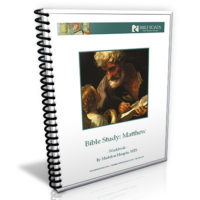
Hortus Delicaiarum, 1180, Latin for “Garden of Delights” illustrating the Sower and the Seed parable. In medieval manuscript from Alsace, France–the first encyclopedia written by a woman (for young novices at the convent). Source: Wikipedia Commons, License CC-BY-SA 3.0
The synoptic Gospels (Matthew, Mark and Luke) share similarities with each other, including their versions of Jesus’ parables. (The Gospel of John doesn’t contain parables.)
When I discovered that Jesus’ parables constitute over one-third of the Master’s teachings in these three books, it was time to treat them as more than loved stories whose characters have seeped into our collective vocabulary (i.e. ‘the good Samaritan’; ‘the prodigal son’, etc.). Someone wrote that ‘familiarity breeds complacency’. How many times have we read or heard, ‘a sower went out to sow’ and partially mused, ‘I already know what that means’? That’s probably a wake-up call, as it was for me this past year, to get serious and dig in more.
Among the many discoveries associated with this new study of the parables, is the conviction—once again—that powerful insights await the student who reads these Gospels continuously, chapter by chapter, in addition to pouring over favorite verses.
For example, Matthew’s parables are clustered primarily in chapter 13. Why? Did Matthew do that intentionally? If so, what point is he trying to help the reader see? What precedes this chapter to lay the groundwork for them? Is there an overall theme Matthew puts forward in which I could better understand the seven parables clustered here? (Asking these kinds of questions is my favorite tool in Bible study.) The answers require a bit of historical background.
Matthew is thought to have written his story of Christ Jesus almost half a century after the Master’s ministry (probably around the mid-80’s CE). By that time, the Antioch, Syria church where Matthew was a key member, was facing the demands of helping pagan Gentiles both convert to, and learn, Jesus’ teachings. They also had to integrate the Jewish members of their congregation, people who had long been awaiting the Messiah and felt Jesus of Nazareth was indeed the one. Matthew’s Gospel was an answer to help both the new converts understand Christ Jesus’ teachings as well as build a church of disparate individuals into the one ‘body of Christ’, as Paul called it (I Cor. 12:27).
Approaching his Gospel logically, Matthew first tells the birth story in light of Jesus’ fulfillment of Israel’s Messianic prophesies. Then he shares the Messiah’s words (chapters 5 – 7, Sermon on the Mount). Next are the Messiah’s works, Chapters 8 – 9, those healings that demonstrate the earlier words. Next, Matthew reveals the mounting resistance to his words and works (Chapters 10-12).
By the time chapter 13 arrives filled with parables, Matthew is laying out for those early workers and us today, Jesus’ parables– often with surprising twists and turns–as a way to illustrate what followership or discipleship looks like.
For example, what is required to go to ‘the other side’ of the lake (Sea of Galilee) with a few disciples while the crowds watch on the shore (see Matt. 8:18)? Is that merely a verse describing changing geography? Or is Matthew teeing up what’s coming if you’re ready and willing to make a life-changing commitment to the Master’s teachings? Will you encounter storms, such as those disciples did who got on the boat (see Matt. 8:23-27)? Or will you observe from a safe distance, perhaps on a symbolic shore of non-commitment? You get to decide what Matthew is trying to tell us
I invite you to reread Chapter 13, not just for its rich seven parables, but with these portions of chapter 8 in mind. Please share what you discover on your own journey in discipleship.
(More on the parables in future blogs.)




Thank you Madelon!
As always, you have nudged me to dig deeper, ask questions.
I love the idea of crossing to the other side or watching “safely” from the shore.
Hadn’t thought of that before!
I am eager to explore more about the parables, to dig deeper, to ask “what does this have to do with me? my community? my church? our world?”
Thanks Madelon, I too love the idea of thinking about what is actually required to go to “the other side” and why would we just want to be part of the crowd at merely watch from the shore. I ask myself am I will to step out of my comfort zone and stretch myself and to over the Sea of Galilee to the other side. What might I find there and is it worth getting into the boat or will I submit to my fear or uncertainty and stay safely on the shore. This requires some deep thinking so thanks… Read more »